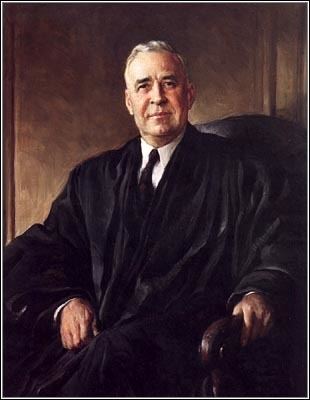Spouse(s) Annabel Person Preceded by James F. Byrnes Name Wiley Rutledge | Succeeded by Sherman Minton Preceded by new seat | |
 | ||
Full Name Wiley Blount Rutledge, Jr. Born July 20, 1894
Cloverport, Kentucky ( 1894-07-20 ) Alma mater University of Wisconsin–Madison
University of Colorado Law School Role Former Associate Justice of the Supreme Court of the United States Died September 10, 1949, York, Maine, United States Books A Declaration of Legal Faith Education Maryville College, University of Colorado Law School, University of Wisconsin-Madison Similar People Stanley Forman Reed, Frank Murphy, Hugo Black, Felix Frankfurter, Franklin D Roosevelt | ||
Nominated by Franklin D. Roosevelt Nominated by Franklin D. Roosevelt Appointed by Franklin D. Roosevelt | ||
How to pronounce wiley blount rutledge american english us pronouncenames com
Wiley Blount Rutledge Jr. (July 20, 1894 – September 10, 1949) was an American educator and justice of the Supreme Court of the United States (1943–49).
Contents
- How to pronounce wiley blount rutledge american english us pronouncenames com
- Early life and education
- Marriage and family
- Career
- Judicial career
- References
Early life and education
Rutledge was born in Cloverport, Kentucky (more specifically, at nearby Tar Springs) to Wiley Blount Rutledge, Sr. (d. 1944), a Southern Baptist minister, and Mary Lou Wigginton Rutledge (d. 1903). After a brother died in infancy, Wiley's sister Margaret was born in 1897. His family moved about while he was young.
He attended Maryville College and then the University of Wisconsin–Madison, graduating from there in 1914. Rutledge taught high school in Indiana while attending the present-day Indiana University Maurer School of Law part-time. He later moved to Colorado, and received a degree from the University of Colorado Law School in Boulder. While matriculating at Colorado, Rutledge joined the Pi Chapter of Alpha Sigma Phi Fraternity.
Marriage and family
The year he graduated from law school, on August 28, 1917, Rutledge married Annabel Person. The couple had three children: Mary Lou (1922), Jean Ann (1925), and Neal (1927).
Career
Rutledge worked in private practice in Boulder for a few years before deciding to pursue an academic career. He taught law at the University of Colorado (1924–26) and at Washington University in St. Louis 1926–30 and was Dean 1930–35, where the Wiley Rutledge Moot Court competition is named in his honor. He was named Dean of the University of Iowa College of Law in 1935. From this position, Rutledge was a vocal supporter of Franklin Roosevelt's plan to pack the Supreme Court.
Judicial career
Roosevelt appointed Rutledge to the United States Court of Appeals for the District of Columbia Circuit in 1939. When Supreme Court justice James F. Byrnes resigned in the fall of 1942 to help supervise wartime mobilization, Roosevelt nominated Rutledge to his position. Rutledge was significantly less conservative than Byrnes and he remained a steady ally of Roosevelt throughout his court career.
Rutledge articulated strong liberal positions, particularly in his interpretation of the due process clause of the Fourteenth Amendment. He wrote for the court in 1946 in Kotteakos v. United States that "our Government is not one of mere convenience or efficiency. It too has a stake, with every citizen, in his being afforded our historic individual protections, including those surrounding criminal trials. About them we dare not become careless or complacent when that fashion has become rampant over the earth."
Rutledge extended this position to dissent from the Court's decision in Yamashita v. Styer, in which Japanese general Tomoyuki Yamashita filed for habeas corpus to appeal his conviction for war crimes in World War II. He wrote:
According to Justice Frankfurter, Rutledge was part of the more liberal "axis" of justices on the Court, along with Justices Murphy, Douglas, and Black; the group would for years oppose Frankfurter's ideology of judicial restraint. Douglas, Murphy, and then Rutledge were the first justices to agree with Black's notion that the Fourteenth Amendment incorporated the Bill of Rights protection into it; this view would later become law.
Rutledge served on the court until his death. On August 27, 1949, Rutledge was vacationing in Maine. He had a stroke while driving his car and died two weeks later, aged fifty-five. His remains are interred at Green Mountain Cemetery in Boulder, Colorado.
One of Rutledge's law clerks, John Paul Stevens, was appointed to the Supreme Court in 1975. His tenure on the Court had an impact on Justice Stevens, who had helped Rutledge draft his dissent in Ahrens v. Clark. In 1948, a 6-3 majority of the Supreme Court ruled that unless detained persons are within the physical jurisdiction of the District Court they petition for a writ of habeas corpus, that court has no jurisdiction to hear the case. Rutledge dissented, arguing that instead of the jurisdiction deriving from the location of the prisoner, it should instead derive from the custodian, the person responsible for the imprisonment. John Paul Stevens later tracked this case and its application to case law. In 1973, the Supreme Court substantially overturned Ahrens, ruling similarly to how Rutledge would have. Justice Rutledge's views were formally endorsed by the Supreme Court in 2004, when Justice John Stevens ruled in Rasul v. Bush that courts were to consider the location of the custodian, rather than the physical location of the prisoner themselves. This ruling allowed detainees in Guantanamo Bay to sue in the United States District Court for the District of Columbia for a writ of habeas corpus.
